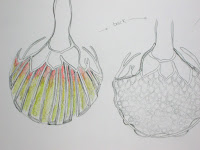In conclusion it can be seen that Tibet, once a powerful warring nation, has long been a deeply religious country, with the wide spread practicing of the Bon-po religion before Buddhism was introduced in the seventh century A.D (Bechert & Gombrich 1984: 269). The Buddhist faith now plays a central role in defining the identity of the Tibetan people because Tibet has been at the core of the history of Buddhism and Tibet is now seen as the home of modern Buddhism. “No other culture has been so deeply imbued with Buddhism as the Tibetans” (Bechert & Gombrich 1984: 7, 232). Daily life is largely influenced by the Buddhist faith because the Buddhist faith demands devotion and is constantly in the minds of the devout. Even the Tibetan ruler, the Dalai Lama, is not only a religious leader but also a political one (Feigon 1996: 12). However the amalgamation of the older shamanistic religions as well as the different forms of Buddhism, which are practiced by Tibet’s neighbours, such as China and India, has made Tibetan Buddhism unique in the world (Bechert & Gombrich 1984: 255).
Buddhism, and its iconography, has inspired much of the art and jewellery which is produced in Tibet and there is profound evidence of religious symbolism in Tibetan jewellery. Jewellery in Tibet is predominantly used in trade (Feigon 1996: 10), as a status symbol (Feigon 1996: 81) and for religious protection (Clarke 2004: 16). Tibetan jewellery is not only embellished with Buddhist iconography to protect and remind the wearer of his faith, but jewellery is also used in the Buddhist faith as a tool to depict and graphically explain complex ideas and religious principles (Clarke 2004: 28). The jewel itself, a beautiful and rare object, is seen as a metaphor for the spiritually enlightened (Clarke 2004: 27). Once again due to the eclectic nature of the Tibetan culture, other older religions also play a part in the traditions, beliefs and manufacturing processes surrounding Tibetan jewellery. Due to these older beliefs much of the jewellery worn in Tibet is seen to be auspicious and having talismanic properties (Clarke 2004: 15) and there is a great deal of folklore surrounding the origin and properties of stones and metals (Clarke 2004: 30).
I used these images and symbols from Tibetan Buddhism to inspire my designs. I have focused on the lotus as it is the most frequently seen image in the jewellery of the Tibetans and it has multiple meanings dependant upon its arrangement and colour. The lotus is held in high regard in Tibet as it is often associated with the gods, divinity and is even a symbol of the Dalai Lama and his purity (Levenson1996: 124). The lotus is a symbol of enlightenment, which is the basis for all Buddhist teachings (Clarke 2004: 28).
Instead of the traditional semi-precious stones used in Tibet (Clarke 2004: 36), I have used techniques such as enameling, not only to challenge myself and to add my own style but also to create the vivid colours found in Tibetan jewellery. These bright colours were what originally inspired me to look into Tibetan culture, religion and jewellery but it was the Buddhist faith that drew me to look deeper into the meanings behind the images.
Additional areas of research into this topic could include the impact the Chinese are having on Tibetan jewellery that is both worn and produced in Tibet. It has been established that in 1903 the Chinese began to enforce their control on Tibet by undermining the control of the religious and political leaders within Tibet and by the overruling of Tibetan laws. The Chinese finally invaded Lhasa in 1950 (Feigon 1996: 110-112) and are seen to be pushing the Tibetan people away from traditional Tibetan Buddhism which, as has been seen, plays a vital role in the jewellery industry in Tibet (Bechert & Gombrich 1984: 7, 232).
Bechert, H & Gombrich, R (ed). 1984. The World of Buddhism. London: Thames and Hudson Ltd.
Clarke, J. 2004. Jewellery of Tibet and the Himalayas. London: V&A Publications.
Feigon, L. 1996. Demystifying Tibet. Chicago: Elephant Paperbacks.
Levenson, C. 1996. Symbols of Tibetan Buddhism. Casanova: Editions Assouline.

























